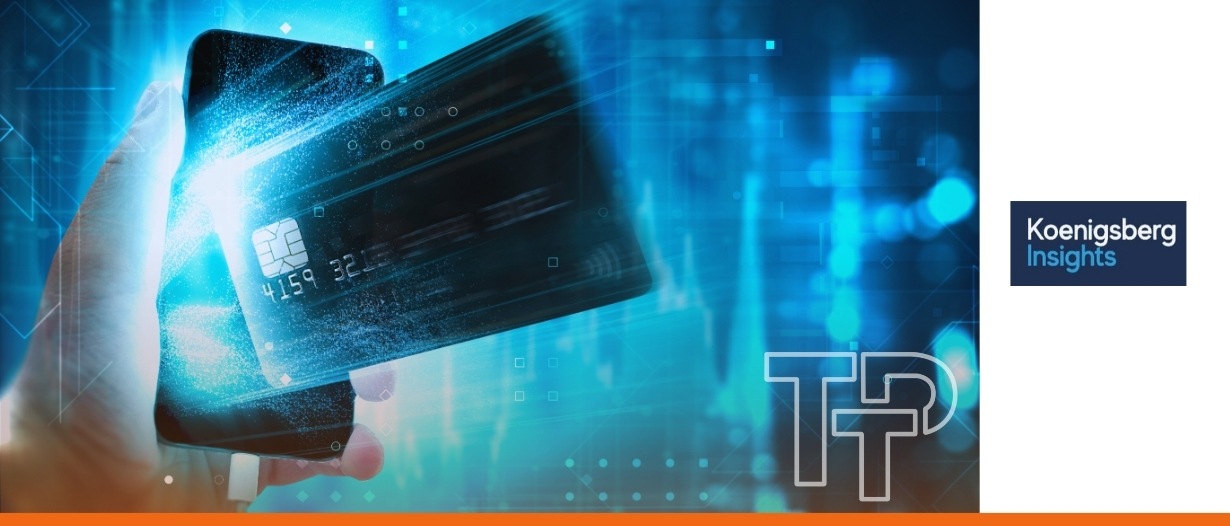VIDEO | BAFT CEO: Charting the course for transaction banking in a fractured world
Tod Burwell
Jun 06, 2025
 Alan Koenigsberg
Apr 16, 2025
Alan Koenigsberg
Apr 16, 2025

A quarter of the way through the century, we have seen an enormous amount of change, driven in no small part by technological innovation. Consider this – Google wasn’t launched until 1998. Before that, searching the web meant you had to “Ask Jeeves.” And the ubiquitous iPhone wasn’t introduced until 2007. Prior to that, the closest thing to a smartphone was the Blackberry. For those too young to know what a “Blackberry” is, let’s just say it isn’t a kind of fruit. That said, technology has led the way, as consumer and business use cases were strongly identified or hypothesised, driving the path toward change. Change did not occur simply because of the tech itself. This is especially true in our payment ecosystem.
To celebrate the launch of Trade Treasury and Payments, I reminisced on the last decade, which chronicled significant and accelerating change within the payment’s universe. The shifts have been profound! It also helps us look forward as we “roll back the future” and better predict and plan for business scenarios that will require investments in the near term to be ahead of the curve tomorrow.
Think about the US, as an example of change through digitisation. As little as 25 years ago, the act of converting a paper consumer check to a digital form (ACH) through a new process called Accounts Receivable Conversion (ARC) was still on the horizon. At first, consumers were not fans and yours truly took to radio shows all over the country to tout the benefits over drive-time talk shows. Interest was tepid at best. Fortunately, I have a thick skin.
However, after 9/11 (sadly), the paradigm shifted and momentum forward brought about real change. Then during and after COVID, business digitisation followed suit. The lesson here is that technology existed the entire time, but it was the commercial urgency that shifted. Even 10 years ago, the critical groundwork for blockchain infrastructure, trade and supply chain payment solutions and digital non-fiat currencies was attracting enormous investment that continues today.
Other innovations, many of which are not breakthrough tech, are becoming everyday parts of our payment lives—digital wallets and mobile payments; online payment gateways; contactless and NFC payments; chip-and-PIN technology; peer-to-peer and social payments; buy now, pay later services; embedded payments and APIs; cryptocurrencies and blockchain-based payments; and real-time payments.
How did they come about? William Gibson, who coined the term “cyberspace,” also said the following: “The future is already here—it’s just not very evenly distributed.” Meaning, everything that is being invented has already been invented. You may not see it or its use cases yet, but the seeds of change are already in place.
The point is, technology doesn’t change overnight; it evolves steadily. In fact, most real and lasting change happens through demand-driven incrementalism. For example, the previously mentioned check conversion innovations came about because consumers, businesses and banks wanted to minimise cumbersome and costly processes around managing paper checks. In response, the banking industry introduced ARC to begin digitising these processes. The necessary technology and changes to industry regulations took time, but this major shift paved the way to many of the far-reaching payment innovations we rely on today.
Over the last five years or so, consumers have led the charge, demanding changes that have improved the payment experience. Business-to-business payments have gradually followed suit as treasury professionals increasingly expect the same conveniences they enjoy in their consumer transactions in the world of business transactions.
And though the payments industry is always looking for the next big trend, many times the driver of change is unexpected. Take for instance the widespread embrace of tap-to-pay, which surged due to the consumer demand for contactless payment methods during COVID. Rather than being accelerated by pure convenience, this innovation was fueled by global public health concerns.
I know I’m not going too far out on a limb when I suggest artificial intelligence (AI) will play an outsized role in the payments industry going forward. AI’s biggest impact will be in enhancing security and reducing losses. AI is ideally suited to analysing vast amounts of transaction data in real time, making it very good at detecting and preventing fraudulent activities.
Another area that is growing in importance is real-time payments. These payments are finding increased applications for B2B transactions. Regulators and central banks around the world have been working to establish domestic standards. And financial institutions have been busy putting technology infrastructure in place to deliver cross-border transparency. It will take time for the technology to settle in, as banks look to make cross-border and cross-currency payments competitive, digital, inclusive, and secure.
Embedded finance is an oft-talked-about future trend, but truth be told, it has been around since the dawn of the internet and eCommerce. What will be new and game-changing will be integrating financial services into non-financial platforms. This creates diversification, opening up the opportunity to meet customers where they are in their journey, allowing them to execute transactions more quickly with less friction, lower cost and reduce potential fraud—all with enhanced data and speed. This opens the door further to non-bank financial players working with traditional banks and the reemergence of ERP players looking to monetise payment and trade flows as the data holder of record for most mid-large corporates, governments, and banks.
These are but a few of the innovations that are changing the payments landscape and will continue to do so in the future. For a deeper dive into these topics and others, please take a look at a piece I recently published on the subject .
The future of payments is evolving rapidly, driven by consumer demand for more options—digital wallets; buy now, pay later services; and even cryptocurrencies. Businesses are adapting and integrating these methods into their payment systems, but the path forward isn’t without challenges.
Change always comes with both risk and reward. It’s a road full of unknowns, requiring businesses to test new technologies, navigate potential pitfalls, and make strategic decisions along the way. As we move forward, the key will be to embrace innovation with a balance of boldness and responsibility.
At times, the industry will see breakthroughs; other times, it will face setbacks. But progress is about managing risk wisely. Success in this space is about creating a stronger, more adaptable ecosystem that benefits everyone. Pollyanna, perhaps… but change is rarely a straight line forward. In reality, our industry is a series of concentric circles that support one another. Whether it’s self-monitoring or taking appropriate risks, the payments ecosystem invites all participants to make profits wisely by creating a healthy environment to do so. Regulators ensure this environment is safe and sound for all players while also leaving room for us to push the limits that will take us to the next level of payment innovation domestically and cross-border.
In my view, payment innovation will continue to evolve naturally, delivering experiences worth having.
The payments universe is unfolding just as it should.

Tod Burwell
Jun 06, 2025

Carter Hoffman
Jun 06, 2025
Trade Treasury Payments is the trading name of Trade & Transaction Finance Media Services Ltd (company number: 16228111), incorporated in England and Wales, at 34-35 Clarges St, London W1J 7EJ. TTP is registered as a Data Controller under the ICO: ZB882947. VAT Number: 485 4500 78.
© 2025 Trade Treasury Payments. All Rights Reserved.